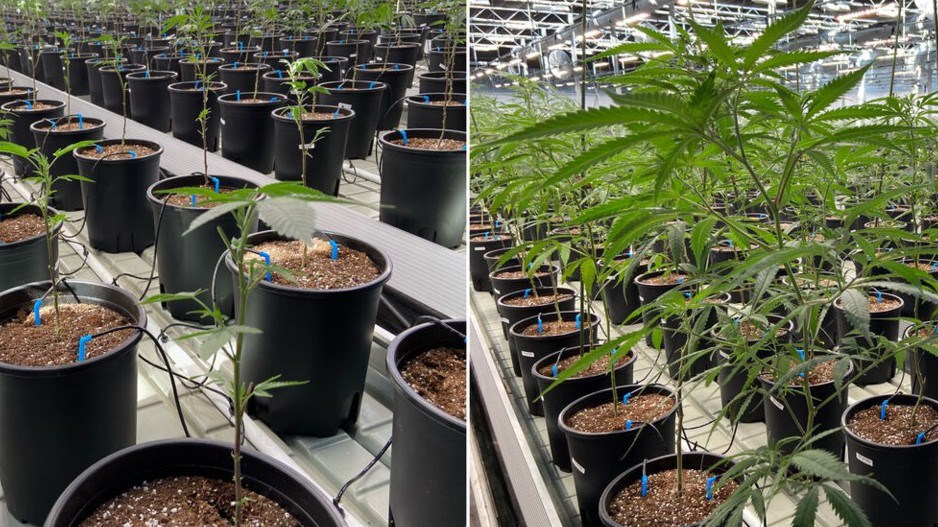B.C.’s heat wave saw cannabis crops thrive.
At least according to Tyler Bigattini, the master grower at Potanicals Green Growers Inc. in Peachland. He says plants cultivated in the company’s greenhouse or those outdoors have taken off since last week’s blistering temperatures swept through the region.
“We hit like 45, 46 C last week,” he says. “You can use it to your advantage and use a little more CO2.”
“They flourished since the heat wave.”
Many farms across the Fraser Valley and Interior are reporting devastated fruit crops, but for cannabis plants that are yet to bud, the more sun the better.
Bigattini says as long as you have enough water to keep the soil moist — not a problem when you are on an artesian spring well — the plants can make major gains in a short time.
“They definitely do like the heat,” Bigattini tells Glacier Media.
Over on Salt Spring Island, Tyler Rumi, co-founder and CEO of Good Buds, says the company’s 10-acre organic cannabis farm benefited from the increased sun exposure too. Good Buds has around 20,000 plants.
"We’re used to something we call ‘Juneuary,’ where a month on Salt Spring you get... overcast and cooler weather," he says. "This year, it was a much more hard and fast growth because there was so much sun available. The more sun they get, the better."
That being said, Rumi notes crops can’t be exposed to extreme heat 24/7.
"When I was walking out there on the record-breaking 41-degree day, sweating out there with the plants, I could tell and they could tell it’s not something you could do forever," he says with a laugh.
Could rising carbon levels be a boon for pot crops?
It’s not just heat that keeps Bigattini positive in the face of climate change.
Under a roof, cannabis cultivators regularly pump carbon dioxide into greenhouses to make plants grow faster. One recent study found indoor cultivation has been linked to releasing the equivalent of two to five tonnes of carbon dioxide into the atmosphere.
Outdoors, cannabis producers must adapt to whatever is in the air (including wildfire smoke), something that’s changing quickly.
In May, the Mauna Loa Observatory in Hawaii saw atmospheric carbon dioxide peak to nearly 420 parts per million, the highest levels since record-keeping began 63 years ago.
Bad news for humanity, but perhaps good news for pot.
“Technically, nothing has been greener,” says Bigattini.
That is, as long as the roughly 200 fires now burning across the province keep their distance.
For Rumi, Good Buds hasn’t had to deal with wildfire smoke this season. However, 2020 was a different story.
"Last year, we got a lot of smoke. It was not good for the plants, and even worse for our staff, trying to work outside," he says.
Air conditioners pushed to the limit
Not all the heat was positive news for pot production.
Indoor crops were another story. Bigatinni says when temperatures rose quickly last week, his 27 five-tonne air conditioning units were working overtime to keep plants alive.
“Indoor, the heat has put strain onto the working system, HVAC and electrical,” he says. “I didn’t have the cooling capacity to cool my rooms.”
The company, which provides Health Canada licensed craft cannabis, also has two facilities in Pitt Meadows. From there, Bigatinni says they shipped 3,000 plants at the height of the heat wave, something made trickier when you have to keep transport cool.
Another roadblock thrown up by the record heat?
All that added watering could lead to problems down the line when the growers look to harvest their crop.
“As the flowering stage comes in, your risk of mould increases significantly,” says the master grower.




